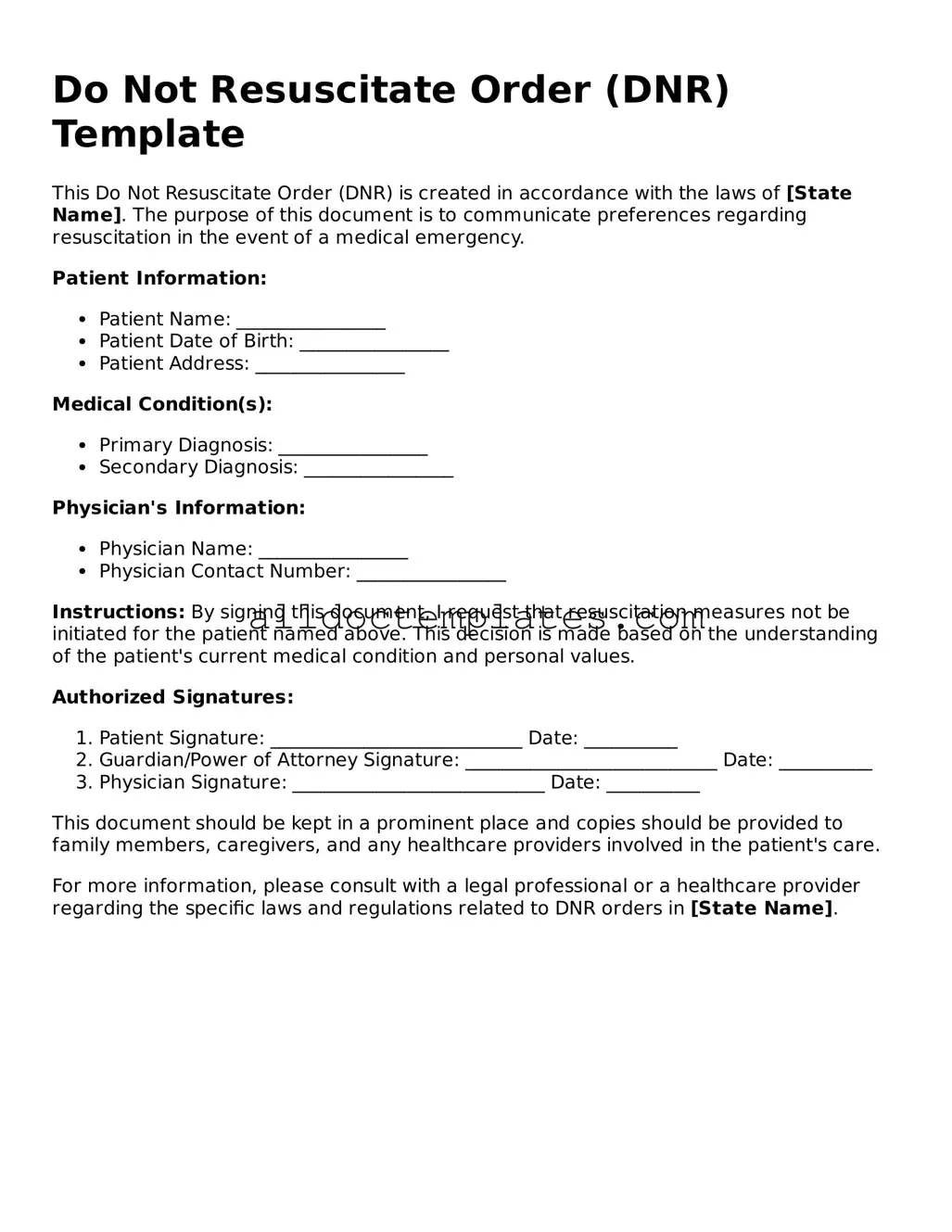Do Not Resuscitate Order (DNR) Template
This Do Not Resuscitate Order (DNR) is created in accordance with the laws of [State Name]. The purpose of this document is to communicate preferences regarding resuscitation in the event of a medical emergency.
Patient Information:
- Patient Name: ________________
- Patient Date of Birth: ________________
- Patient Address: ________________
Medical Condition(s):
- Primary Diagnosis: ________________
- Secondary Diagnosis: ________________
Physician's Information:
- Physician Name: ________________
- Physician Contact Number: ________________
Instructions: By signing this document, I request that resuscitation measures not be initiated for the patient named above. This decision is made based on the understanding of the patient's current medical condition and personal values.
Authorized Signatures:
- Patient Signature: ___________________________ Date: __________
- Guardian/Power of Attorney Signature: ___________________________ Date: __________
- Physician Signature: ___________________________ Date: __________
This document should be kept in a prominent place and copies should be provided to family members, caregivers, and any healthcare providers involved in the patient's care.
For more information, please consult with a legal professional or a healthcare provider regarding the specific laws and regulations related to DNR orders in [State Name].
